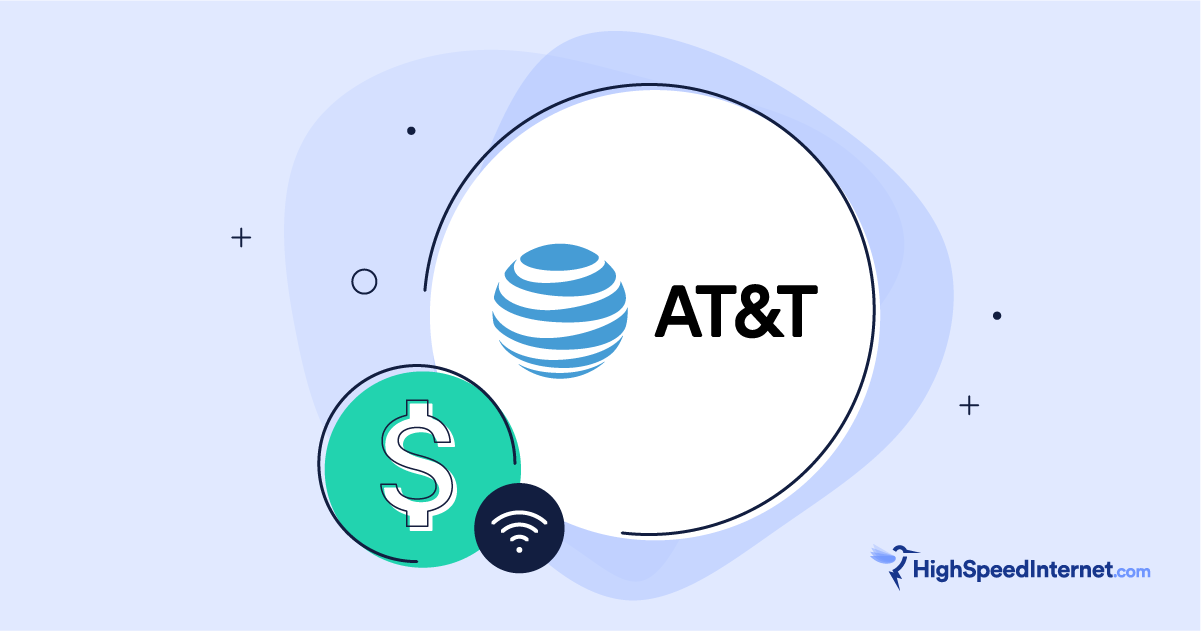How to Get Internet without a Phone Line or Cable
Get 5G home internet, traditional fixed wireless, or a satellite connection
Dec 22, 2025 | Share
Brand Guides, FAQ
If you don’t have (or want) a physical cable connecting your home to the internet, you can still connect with a wireless internet connection. There are plenty of different options, including fixed wireless, 5G home internet, mobile hotspots, and satellite. Each has its pros and cons, so we’re here to walk you through them so you can find the solution that works for you.
Rural internet options
People living in rural areas often have the most to gain from going with a wireless internet provider. Providers with large cable or fiber networks often don’t extend their infrastructure into areas with fewer people. This means that installing a line to the nearest network can be incredibly expensive—and in many areas, it isn’t even an option.
Traditional fixed wireless
| Provider | Download speed | Price | Order online |
|---|---|---|---|
|
| 25–50Mbps | $35.00–$65.00 /mo. | |
|
| 30–1,000Mbps | $15.00-$75.00/mo.* w/ Debit Discount |
Data as of 12/22/2025. Offers and availability may vary by location and are subject to change.
*Debit Discount requires valid debit or prepaid card as payment method (otherwise $5 more per month). Standard rates apply after promo period. Speeds based on wired connection. Actual speeds (including wireless) are not guaranteed and will vary due to device limits, multiple users, network & other factors. Services subject to all applicable service terms and conditions, subject to change. Plan availability varies. Restrictions apply.
Fixed wireless internet transmits a signal straight from a communication tower to a receiver in your home. Fixed wireless is one of the fastest types of wireless connection, but it’s not a very widespread technology. Many fixed wireless providers are local companies, so it’s a good idea to look beyond the usual nationwide providers to see if a smaller provider covers your area.
Satellite internet
| Provider | Speed range | Starting price | Order online |
|---|---|---|---|
| Up to 150Mbps | $119.99/mo.* | ||
| Up to 25–100Mbps (stated speeds are not guaranteed) | $39.99/mo.† for first 12 mos. | ||
|
| Up to 400Mbps | $40/mo.‡ |
Data as of 12/02/2025. Offers and availability may vary by location and are subject to change.
*Prices, speeds, and availability vary by location. Prices are subject to change. No annual contract or installation fees are required. Monthly equipment lease fees and taxes may apply.
†Minimum term required and early service termination fees apply. Monthly Fee reflects the applied $5 savings for ACH enrollment. Offer may vary by geographic area.
‡Plus hardware, shipping & handling fees, and tax. Fully refundable. Depending on location, some orders may take 6 months or more to fulfill.
Satellite is by far the most widely available type of wireless connection out there. No matter how remote your location is, you can still connect to satellite internet as long as you have a clear view of the southern sky.
Satellite internet also has several downsides. Most satellite plans have very restrictive data limits and high latency. That can make activities like online games and video chat difficult or impossible. Hughesnet has attempted to address the latency issue with its Hughesnet Fusion plans. Hughesnet Fusion combines satellite and terrestrial wireless connections into a single connection. With some additional equipment, it will correctly route your connection over satellite or wireless, giving you low latency when you need it, though other issues associated with satellite internet, such as low speeds and data caps, could still be an issue.
New developments in low-Earth orbit satellite technology, pioneered by Starlink and OneWeb, could significantly mitigate these problems. Although these new satellite services have a lot of potential, they all—including Starlink—are struggling to scale their operations up to be a reliable, nationwide internet service provider. As a general rule, you shouldn’t rely on satellite internet unless it’s your only option.
Want to know what internet options are available in your area?
Enter your zip code below.
5G home internet
| Provider | Speed range | Starting price | Order online |
|---|---|---|---|
|
| Up to 300–1,000Mbps | $50/mo.* w/ Auto Pay | View Plans |

| Up to 415–498Mbps | $50/mo.† w/ AutoPay, plus taxes & fees. | View Plans |
| Up to 75–225Mbps | $60.00/mo.‡ |
Data as of 12/22/2025. Offers and availability may vary by location and are subject to change.
*Price per month with Auto Pay & without select 5G mobile plans. Consumer data usage is subject to the usage restrictions set forth in Verizon’s terms of service; visit: https://www.verizon.com/support/customer-agreement/ for more information about 5G Home and LTE Home Internet or https://www.verizon.com/about/terms-conditions/verizon-customer-agreement for Fios internet.
†Guarantee exclusions like taxes and fees apply.
5G home internet uses cellular technology to connect you to the internet, and it has several advantages over the previous generation. It will be up to ten times faster than 4G (and even faster when compared to some 4G LTE connections). 5G will also have incredibly low latency compared to other wireless technologies, making it excellent for online games and video chat. It’s also well-suited to deal with high volumes of traffic that often cause older connections like cable to slow down at peak hours.
The biggest players in home 5G are mobile wireless companies like Verizon and T-Mobile. These companies are already upgrading their infrastructure for their mobile customers, which will also give them the opportunity to expand their home internet coverage. AT&T also recently launched its own 5G home service, Internet Air, but it’s mostly meant for former DSL customers who can’t get their copper connections anymore.
Each provider is growing its 5G network by building new towers, but this internet type even works where 5G isn’t yet available. If that’s the case, your gateway will rely on 4G LTE internet instead.
Fiber
| Provider | Download speed | Price | Order online |
|---|---|---|---|
|
| 1,000–2,000Mbps | $70.00–$100.00/mo. | View Plans |
| 300–5,000Mbps | $55.00–$180.00/mo. | ||
|
| 200–5,000Mbps | $29.99–$129.99/mo. |
Data as of 12/22/2025. Offers and availability may vary by location and are subject to change.
If you don’t have a phone line or cable but are considering installing a wired connection, you should definitely go for fiber. Fiber is the fastest and most reliable way to connect to the internet. Fiber plans are also comparable in price to many cable plans while offering much better performance.
Fixed wireless
Fixed wireless connections can be good options in the city, just as they are in rural areas. It’s more common in urban and suburban areas than it is farther away from city centers and can often fill in the coverage gaps within a city. That means if you live in the part of town between two major providers’ coverage areas, a fixed wireless provider might give you the speed you’re looking for instead of settling for slower options.
More flexible options
Wireless internet gives you a lot of options, but some people need even more flexibility. If you travel frequently or live in an RV, you might want to take your internet connection with you.
The easiest way to do this is simply to use your cell phone as a mobile hotspot. This will allow laptops and other devices to connect to the internet via your phone, using the data on your phone plan. A better long-term option is to buy a dedicated mobile hotspot.
Mobile hotspots work similarly to 4G home internet, but they don’t have to stay in one place. You can use them anywhere your plan gets service. The tradeoff is that these plans typically cost much more per month than a similar 4G home internet plan would, so make sure you need the added flexibility before you buy one.
How to choose
Each type of connection has its pros and cons, but availability is the big one. There’s not much you can do if you don’t have access to many options where you live. Beyond that, it’s much more of a give and take. The best type of internet depends on what’s most important to you.
| Connection type | Pros | Cons |
|---|---|---|
| Satellite |
|
|
| Mobile hotspot |
|
|
| Fixed wireless |
|
|
| 5G |
|
|
| Fiber |
|
|
FAQ
How do I get standalone internet?
How do I get Wi-Fi at home without a cable?
Can cutting the cord save me money?
What alternatives are there to cable?
Can I get satellite internet if I live in a city?
Author - Peter Christiansen
Peter Christiansen writes about telecom policy, communications infrastructure, satellite internet, and rural connectivity for HighSpeedInternet.com. Peter holds a PhD in communication from the University of Utah and has been working in tech for over 15 years as a computer programmer, game developer, filmmaker, and writer. His writing has been praised by outlets like Wired, Digital Humanities Now, and the New Statesman.
Editor - Rebecca Lee Armstrong
Rebecca Lee Armstrong has more than six years of experience writing about tech and the internet, with a specialty in hands-on testing. She started writing tech product and service reviews while finishing her BFA in creative writing at the University of Evansville and has found her niche writing about home networking, routers, and internet access at HighSpeedInternet.com. Her work has also been featured on Top Ten Reviews, MacSources, Windows Central, Android Central, Best Company, TechnoFAQ, and iMore.




